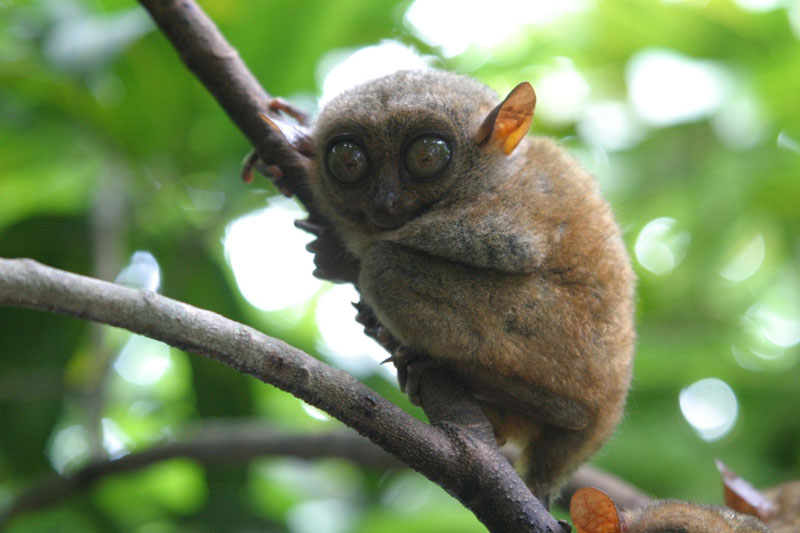The primate 'talks' with ultrasound
AFP quoted a study by US and Philippine scientists published on February 8, saying that one of the world's smallest primates Tarsius syrichta communicates with each other with ultrasound that we cannot hear. even when near them.
According to research reports, the primates are no bigger than a man's hand.
Tarsius syrichta can listen to and emit regular sounds with effective frequencies to alert the danger. This is also one of the only mammals that can send and receive ultrasonic sound signals at frequencies of more than 20 kilohertz (kHz).
Compared to humans, primates catch the ultrasonic signal 'signal' better. Humans cannot hear sounds above 20 kHz while dogs can hear whistles ranging in frequency from 22 to 23 kHz.

The world's smallest primate 'talks' with ultrasound.
In order to measure the frequency of primates of primates, scientists have recorded 35 samples in nature.
According to scientists, the maximum frequency of vocalization reaches 67 kHz, which is the highest value of any terrestrial mammal, both bats and some rodents.
The sound of ultrasound can be advantageous for both the emitting signal and the child receiving the signal, especially making it difficult for predators to detect and locate.
The world's smallest primates have five fingers that resemble humans and the largest eyes of any other primates that live in nature.
- Compact ultrasound, priced at only 100 USD
- Thanks to the invention of a handheld ultrasound machine, the doctor discovered that he had cancer
- The world's best ultrasound technology helps detect abnormalities in the fetus
- Will mobile ultrasound detect a revolution?
- Fever with a surreal ultrasound
- Don't watch Korean movies anymore, watch these 20 TED Talks for more creative ideas
- New ultrasound device to detect heart disease
- Should make color or black and white ultrasound?
- Shivering in elderly people can be cured by a new ultrasound machine
- Ultrasound can shorten 30% of the time of chronic wound healing
- Use ultrasonic waves to open the screws
- The lost grandfather appeared in the ultrasound image of the great-grandchild
 Animal 'suffering' after hibernation
Animal 'suffering' after hibernation Why do goats climb well?
Why do goats climb well? Scientists were surprised to see chimpanzees eating turtles
Scientists were surprised to see chimpanzees eating turtles Giant catfish died deadly due to drought in Thailand
Giant catfish died deadly due to drought in Thailand